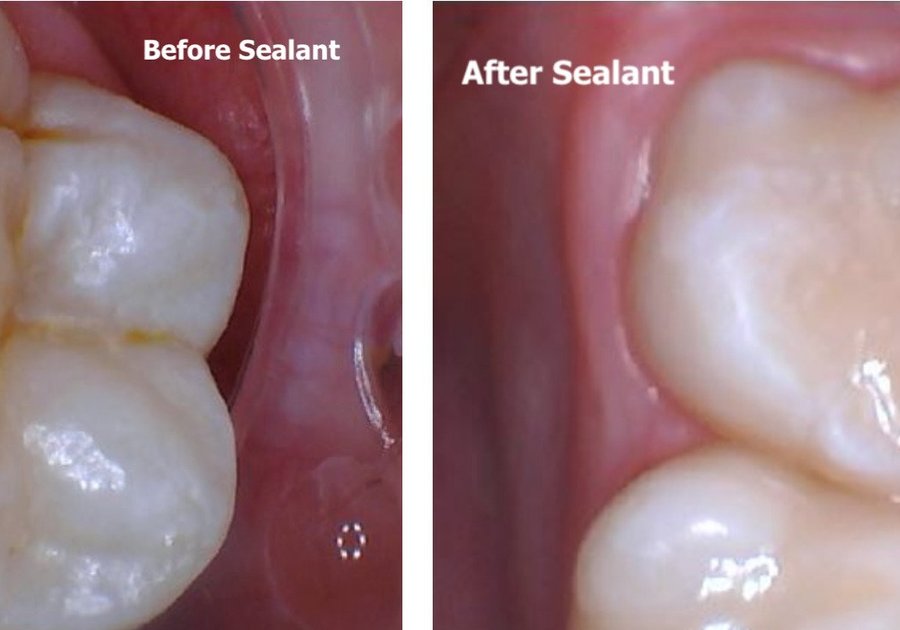In my office, I am all about prevention. That means taking measures to prevent cavities and gum disease from developing in the first place. One great tool in preventing tooth decay is the timely use of dental sealants, which can reduce the likelihood of a tooth getting a cavity by 76%.
A sealant is a dental material similar to polish or a thin cream that is applied to teeth that have naturally occurring deep pits and grooves. These pits and grooves make it difficult to keep the tooth clean because they act like traps for food particles and germs. When a sealant is placed, it fills in and smooths out these areas, keeping bacteria and debris away and making it easier to clean with a toothbrush. In addition, most sealants contain fluoride, which is absorbed by the tooth and makes it more resistant to decay. In some cases, a small cavity that is just starting to develop may also be treated by covering it with a sealant.
Many parents ask me if I can seal all the teeth. Sealants work best on teeth that have natural fissures and grooves, like molars or teeth that are fused together. The most commonly sealed teeth are the first and second permanent molars, which usually grow in around 6 years and 12 years of age, respectively. These teeth are very far back in the mouth and more difficult to reach with a toothbrush, and they usually have deep pits and grooves that are prone to developing cavities. Furthermore, while these teeth are growing in, their enamel is still maturing, so they are more porous and prone to tooth decay. Placing sealants on these molars soon after they erupt is a great way to protect them against decay because it protects the porous enamel and prevents plaque from accumulating in the pits and grooves.
Sealants are safe and easy to place. Most children can tolerate this procedure since it is quick and pain-free. The procedure entails cleaning and drying the tooth, followed by “painting” the sealant over the tooth surface and curing it with a special light. With a lifespan of up to ten years, they are very effective in protecting the teeth, but like any other dental treatment, this depends on home care and diet. Sealants are bonded to the tooth, but eating a lot of sticky, chewy foods can peel them off over time. When your child has his or her regular checkups, the dentist will check to make sure the sealants are still intact.
It is important for your child to come in for his or her regular 6-month checkups so their molars can be sealed as soon as they are ready. Your dentist will also discuss with you any other teeth that may require sealants. Used in conjunction with fluoridated toothpaste, a healthy diet, and regular dental checkups, sealants are can help keep teeth healthy and strong for many years!
Dr. Roxanna Khajavi is a pediatric dentist, but beyond that, she loves what she does. She believes the first experience any child has in a dental office needs to leave a special mark in their mind and in their hearts. This is the reason she became a dentist. Dr. Khajavi strives to make sure that all her patients have a wonderful experience. She says, “The dentistry part is easy, but making your children laugh and smile while under my care, has never been an obstacle! Our mission is to make sure every child feels like they are surrounded by a team who truly cares about their experience. To us, every patient is more than just a “patient”, each child is family.”
Battery Park Pediatric Dentists proudly provides quality pediatric dental care to the community of New York and surrounding areas. Their office specializes in dentistry for infants, children, and adolescents. Their services include preventative children’s dentistry, oral hygiene and maintenance, management of growth and development, conscious sedation, comprehensive orthodontic treatment and much more. You can read more about them HERE.
Related articles:
 |  |  |
Macaroni Kid Lower Manhattan is the family fun go-to source for the latest and most comprehensive information in our area. Subscribe for FREE today.







